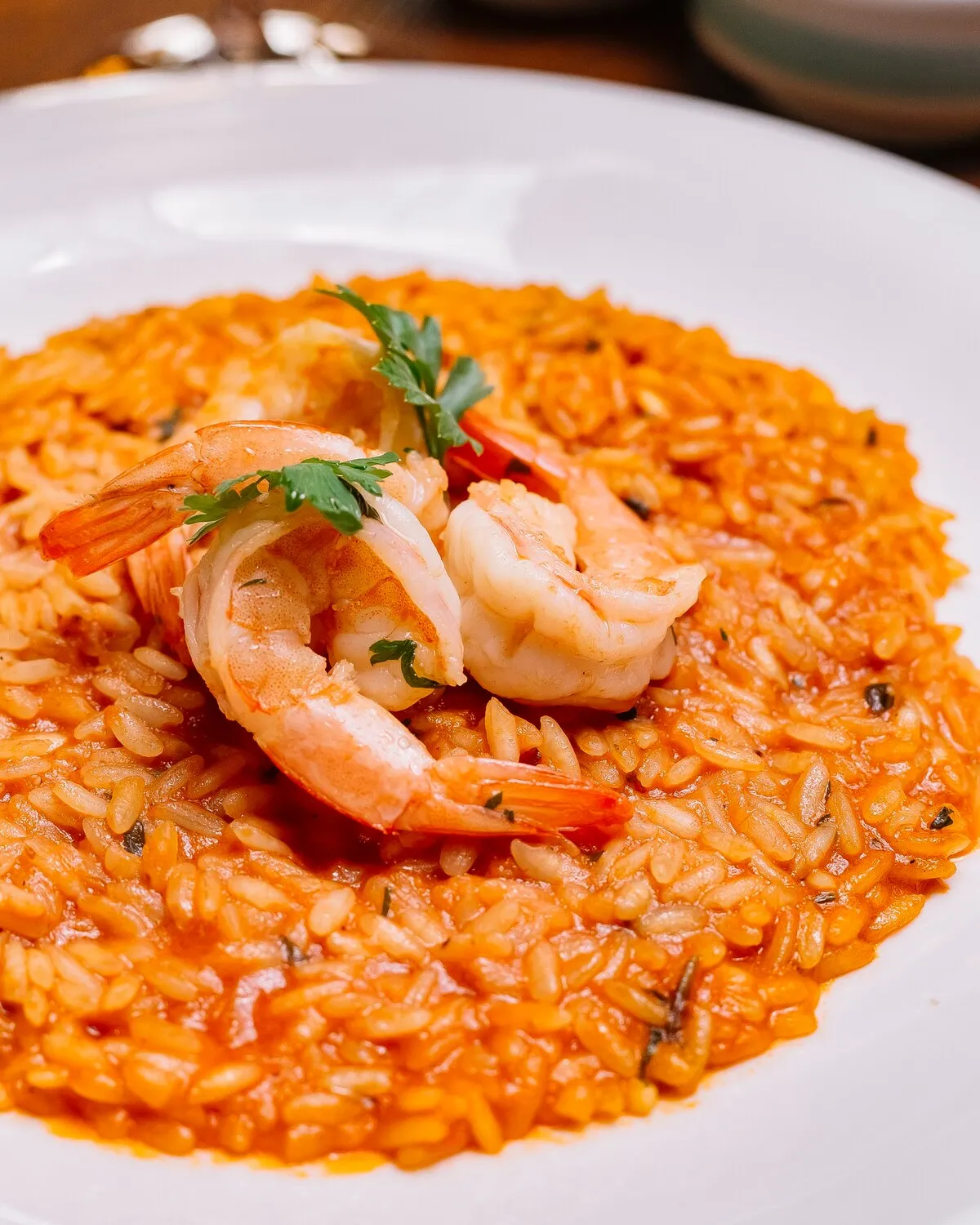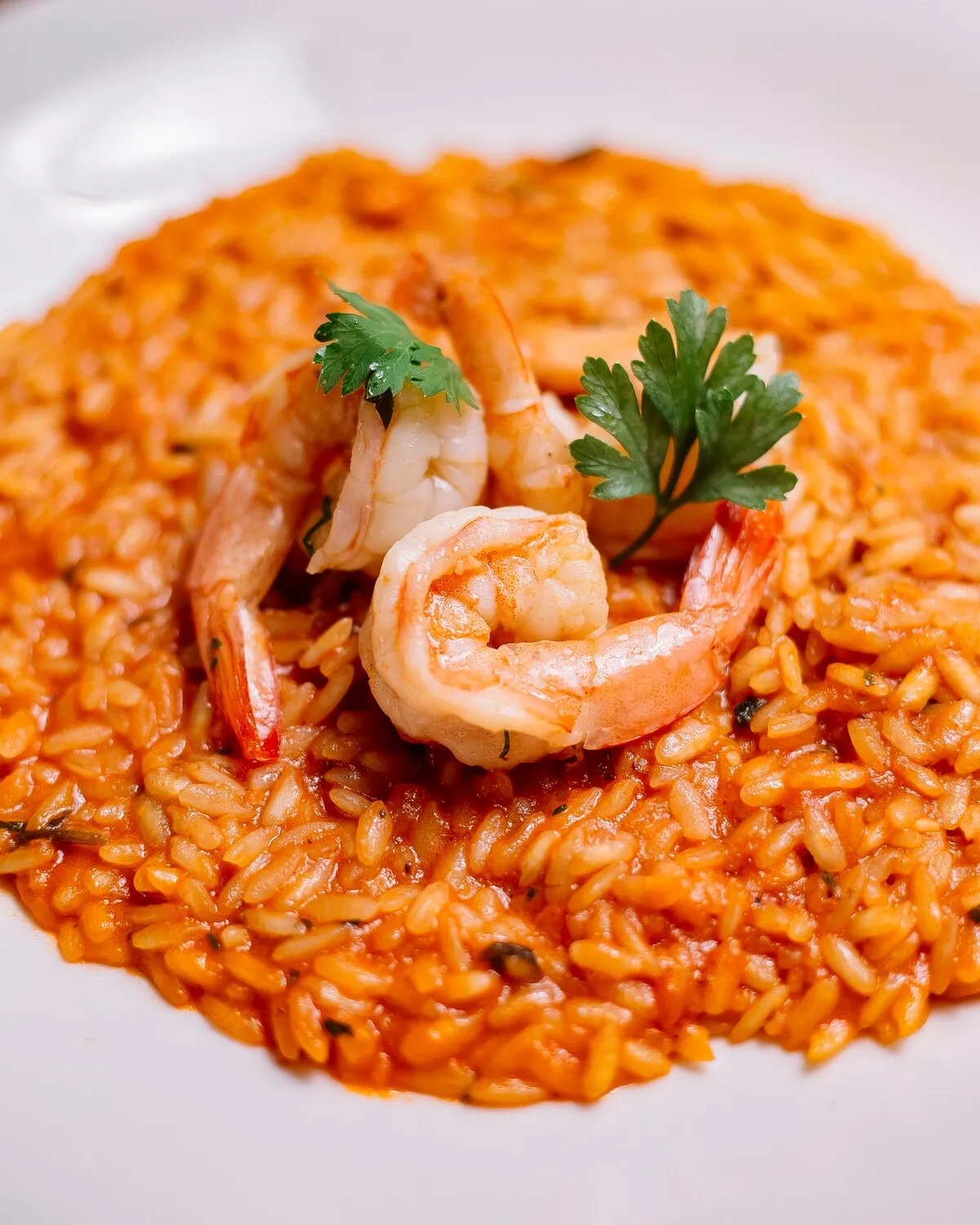
Risotto Frutti di Mare
Creamy risotto with a variety of seafood.
Nutrition Facts
* The % Daily Value (DV) tells you how much a nutrient in a serving of food contributes to a daily diet. 2,000 calories a day is used for general nutrition advice.
Risotto, as a rice-based dish, has roots in the Arab influence on Southern Italy and the introduction of rice cultivation in the Po Valley during the Middle Ages. Seafood, abundant along the Italian coasts, has always been a staple ingredient. Risotto Frutti di Mare likely evolved as a way to combine these readily available resources, showcasing the fresh catches from the sea in a comforting and flavorful dish. The dish developed over time, reflecting regional variations and family traditions.
Risotto Frutti di Mare holds a significant place in Italian coastal cuisine, representing a celebration of the sea's bounty and often served during special occasions or family gatherings. It’s more than just food; it’s an expression of Italian culinary heritage and resourcefulness.
Regional Variations
Different coastal regions of Italy have their own variations of Risotto Frutti di Mare. For instance, in Venice, you might find squid ink risotto with seafood, while in other areas, local shellfish or specific types of fish are highlighted.
Family Tradition
Recipes for Risotto Frutti di Mare are often passed down through generations, with each family having its own secret ingredient or preferred method of preparation. It is common to prepare this dish to celebrate special occasions.
Celebration of Seafood
The dish emphasizes the freshness and quality of the seafood. It is often served as a 'primo piatto' (first course) to showcase the best catch of the day.
Risotto Frutti di Mare is a symphony of maritime flavors balanced with the creamy richness of the risotto. The dish offers a complex and satisfying taste experience, characterized by the delicate sweetness of seafood and the savory depth of the broth.
The primary flavors derive from the combination of various seafood elements. Shrimp provides a sweet and succulent taste, while clams and mussels offer a briny and slightly earthy flavor. Calamari adds a chewy texture and a mild, oceanic note. The cooking process in a seafood broth enhances the overall depth of the dish, imparting umami richness. Garlic, white wine, and parsley contribute aromatic complexity and brightness, cutting through the richness of the risotto and adding layers of herbaceousness. The creamy texture achieved through the slow addition of broth and constant stirring creates a luxurious mouthfeel that complements the delicate flavors of the seafood.
Rice Choice
Use Arborio, Carnaroli, or Vialone Nano rice. These varieties have a high starch content, which contributes to the creamy texture of the risotto. Arborio is the most widely available, while Carnaroli is considered superior for its texture and ability to absorb flavor.
Broth Quality
Use a high-quality seafood broth or homemade fish stock. The broth is the foundation of the flavor, so using a good one is essential. Avoid using bouillon cubes as they lack depth of flavor.
Seafood Timing
Add the seafood in stages, depending on the cooking time. Add firmer seafood like calamari earlier, and more delicate seafood like shrimp and mussels towards the end to prevent overcooking. This ensures that each element is perfectly cooked and retains its individual flavor.
Gentle Stirring
Stir the risotto gently and constantly. Stirring releases the starch from the rice, resulting in a creamy texture. Be careful not to overstir, as this can make the risotto gluey. Keep stirring until all the liquid is absorbed before adding more broth.
Explore additional Risotto dishes and restaurants
Explore RisottoDiscover top dining spots and culinary experiences in Granada.
Explore GranadaLearn more about the food culture, restaurant scene, and culinary heritage of Spain.
Explore Spain
